Thanks Eggo! Container growing Tropical Fruits
Eggo - While searching on how to grow cherimoyas in cooler climates, I came across your post. I found the artaicle it to be extremely helpful and informative. I think a lot of the members here (who grow their tropical fruits in container) will benefit as well. Thanks for posting this article!
Here's the article: UnderCover Crops - Mobile Tropical Fruit
Orchards By Ray Bayer Tropical Fruit World (March/April 1990
22-24; May/June 1990 58-59; September/October 1990 130; Nov/Dec
1990 163; Jan/Feb 1991 29;
Let me inspire you to discover a new kind of gardening pleasure.
My excitement is over the container growing of tropical fruit
plants, something I have now been doing for more than 13 years.
Each year proving more pleasurable than the last.
For the temperate climate gardener containerizing is the only
method available for growing tropical fruit trees.
I live in southwest Pennsylvania, and as I write this article
we're in the midst of a winter snow squall with a wind chill of
around 9F. My tropical fruit trees are completely unaware of
this miserable phenomenon known as an Arctic cold front and are
busily blooming and setting fruit.
After a summer outdoors, and before the first freeze, I simply
pick up my potted plants and plop them in a greenhouse under
fluorescent lights, where they spend their winter in the Tropic
of Pennsylvania. The ability of these plants to adapt to their
artificial environment and continual restrictive growing is
tremendous. As I write, my plants are setting such varied fruits
as jaboticaba, passionfruit, citrus, cherimoyas, feijoas and
more.
Enthusiasm over this method of tropical fruit culture need not be
confined to northern gardeners. South Florida growers and others
in sub-tropical and mild winter areas should be exposed to the
joy of containerized growing. It opens up an entirely new area to
the rare fruit hobbyist. Fruit trees can be moved from one area
of the yard to another to take advantage of sun or shade.
Inspection of root systems can be done as needed by simply
tapping the tree out of the pot. Landscapes can be achieved by
sinking the potted trees into various locations, and later moving
them if a different garden scheme is desired. Exact watering and
fertilization schedules are easier because confined root systems
and nutrient deficiencies are taken care of more quickly. One of
the most exciting aspects of this type of gardening is that,
thanks to the portability of the plant, very tropical fruit
trees, such as the South Asian mangosteen and rambutan, can be
grown with little worry of frost or cold damage. In Florida this
advantage, of course applies to any cold sensitive species. When
the temperature threatens to plummet simply pick up the pot and
set it in a protected area, whether a Florida room or a garage.
Most trees will thrive for years in five to ten gallon pots
without any special care. As most tropicals fruit on new growth,
I usually top prune mine yearly to stimulate new fruiting growth,
sometimes taking up to a third of the growth off. This drastic
one-third reduction is done (if at all) every fourth or fifth
year, and is sometimes accompanied by root pruning, also a
one-third reduction. This is done by knocking the tree out of the
pot and reducing the root system on all four sides and bottom by
using a key hole saw or similar tool. The tree is then put back
in the pot and fresh potting medium is packed around it, along
with slow release fertilizer if desired. It is then set in a
semi-shaded location in the yard (or greenhouse) until new growth
is evident and the flowering/fruiting cycle will be revitalized.
This is only done to trees that are stressed due to extreme root
crowding and exhibit root bound symptoms by producing small or no
fruit crops, small leaves and little new growth. Of course this
stage of stunted growth is rarely ever reached, although newly
purchased plants may be in need of an immediate root cut. Fibrous
roots appearing on the top of the soil is the sign that it is now
time to prune or repot. Pot grown fruit trees usually have a
completely fibrous root system, being devoid of a tap root, so
this method of keeping the tree within bounds is not at all
detrimental. Think of it as having your hair styled; a little off
the top and sides always makes your hair grow better and look
fuller. So it is with containerized fruit trees.
Every spring I like to replace the top three or four inches of
soil with fresh medium. This gives the plant a growing boost and
aids in better fruit production. My fruit trees are grown in a
homemade potting mix of two-parts garden loam or packaged potting
soil, one-part perlite, one-part vermiculite and a half-part
peat. I also use a commercial soilless mix consisting of sphagnum
or peat moss, vermiculite, perlite and dolomite lime for a pH
buffer in which the trees seem to do as well as or better than in
the soil mixture, though it needs to be enhanced more often with
fertilizer. It should be noted that the reason I add lime to my
soil mix is that fertilizing containerized trees often tends to
lower the pH to the point where the nutrients are bound up in the
soil making them unavailable to the plant; adding a small amount
of dolomite lime simply keeps the pH in the neutral range. Of
course, some fruit trees enjoy being on the acidic side of the pH
tables as long as nutrients are available to them. Jaboticabas do
well in a pure peat, perlite, vermiculite mixture.
I usually use diluted amounts of fertilizer with every watering
and full strength dosages twice monthly or more depending on
rainfall. Due to the fact that the trees are raised in
containers, nutrient leaching can be a problem in areas or
seasons of heavy rain. I've found that Peter's 20-20-20
fertilizer mixture to be as close to ideal as any. I also
supplement many of my trees with triple super phosphate every
four to six weeks during the growing season along with a foliar
feeding of potassium nitrate. Spraying is done in early morning
and evening when the leaves are most receptive to this type of
feeding. Once or twice a season I also spray on trace elements to
round out their diet.
Chlorosis of certain containerized trees can be a problem, but
prudent applications of nitrogen corrects this problem as does
iron. Passifloras, for instance, are susceptible to chlorotic new
growth and require more nitrogen than either citrus or peach
trees. Care must be taken whenever iron or nitrogen is sprayed on
new growth to avoid burning. I have made the "more is better"
mistake in foliar feeding before and it is not a pleasant sight
to watch vigorous healthy new growth turn black almost overnight,
shrivel up and flake away. Healthy deep green growth inevitably
always appears but it sets back flower and fruit production
considerably. Following the manufacturer's dosage is the key to
successful chemical feeding.
Personally, I use water soluble fertilizer, as I feel I have much
more control over plant feeding with this method. Other growers
might prefer the longer lasting pellet-type feed.
There are various long lasting pellet fertilizers available that
provide up to three months of constant feeding. Osmocote 14-14-14
is one such product. Many opt for completely organic feed such as
bone meal, blood meal and green sand, but the percentage of
nutrients are so low that I don't think a heavy feeding tree
would benefit satisfactorily from them. The one organic I do use
is fish, especially those from the briny depths of the sea. The
trace elements and nitrogen these critters can supply to a potted
fruit tree is tremendous, and it's a long lasting supply too. A
few cubes of finny flesh will last a northern growing season and
then some.
Watering is, of course critical to all plants but especially to a
potted fruit tree. During the summer a healthy, fruiting
containerized tree drinks gallons of water. I've often had to
water mine every other day. Growers in sub-tropical areas such as
Florida who are used to growing in the ground may be watering
more than they're accustomed to. This can be remedied somewhat by
mulching the top of the pot with dried grass clippings, unmilled
sphagnum moss or pre-packaged mulch. During the summer most fruit
trees are holding a crop and dry soil can turn this year's pot
crop into this year's pot drop: those delicious lychees may be
this past year's history with only one soil drying. One of the
best methods of preventing evaporation is by sinking the pot in
the ground and mulching the top. Also, use plastic pots. Burying
the containers gives added wind protection to the trees. It's
frustrating to find a fruit laden tree toppled over and half of
its' crop knocked off. Even by sinking the pot one third of its
height into the ground will prevent this type of frustration.
There are many reliable nurseries and growers in the U.S. who
will ship tropical fruit trees. When visiting a nursery that has
a plant I am looking for, I provide them with a suitable box with
return postage and have them ship the plant to me. The tree is
simply knocked out of the pot and bare rooted with the roots
wrapped in damp newspaper and a trash bag to prevent leakage.
Many nurseries will spray the plants with evaporation retardants
to prevent water loss. The tree usually needs to be pruned back,
sometimes severely, and is then placed in the box surrounded by
newspaper to prevent too much movement in transit. It usually
takes three days to reach me from Florida. In this short period
of time the tree suffers very little damage, if any, and upon
arrival is immediately potted up and placed in a protected
location for a few days. Once acclimation is over it is placed in
full sun and within a couple of weeks begins to push out new
growth. I have been shipping plants for many years this way and I
have never lost one due to shipping damage or shock. I usually
request priority mail shipment through the U.S. postal service
because they deliver six days out of the week unlike United
Parcel Service which ships only five.
My trees don't really feel their first spring breeze until
mid-April when they are set outside. This is a critical time for
the plants, being the beginning of their summer reacclimation
period. They have been wintered over either in a greenhouse
(which happens to be plastic with light intensity much less than
glass) and under fluorescent lights. If they are exposed to
sunlight immediately, even the weak spring sum, the leaves will
be charred almost at once. I set them in a shaded location for a
few days, then to an area of dappled sunlight and eventually to
full sun. This entire process may take from two to three weeks
depending on how the trees are reacting. If I notice bleached
areas on the leaves, then they have been exposed to the sun too
quickly and will be placed in a semishaded area a while longer.
This acclimation period is not lost growing time because the
trees are actively sending out new growth. It's simply a period
of "hardening up" the leaves to the summer sun. The last years'
growth is rarely affected to the extent of the current seasons
growth; it usually stays green with no signs of scorching.
The nights during mid-April to mid-May can drop more than 40
degrees which means a 70°F day can be followed by a 30°F night.
This is a period of overwork for me because there is a likely
chance the trees will have to be sheltered in the garage from a
cold night. It doesn't happen nightly and rarely in May so the
only early-season backaches I suffer are in the last weeks of
April. After this initial yearly acclimating period, my trees
grow as well as the same trees in Florida.
The portability of my fruit orchard allows me to grow quite a
number of different tropical fruit trees, and to see them
flowering and fruiting in Pennsylvania is a definite sight to
behold. Next to a black oak may be a blooming carambola or beside
a sugar maple a jaboticaba crop will be ready to harvest.
Crawling skyward beside a clematis is a passionvine while my red
cattleya guava is ripening next to a dwarfing cherry. My summer
yard is a pleasing combination of temperate and tropical. This
infusion of tropical fruit trees among the standard zone
varieties adds a measure of curiosity and appeal to all who see
them. When viewing a Passiflora alata (Fragrant Granadilla) in
full bloom for the first time a neighbor was absolutely convinced
that the flowers were plastic because, as she stated," a flower
just doesn't look like that." The incredible complexity of the
passionflower certainly lends itself to be called the ultimate in
flora beauty just as containerizing is the pinnacle of tropical
fruit culture, at least for the temperate zone gardener.
I have found one of the finest trees suitable for potted fruit
culture to be the jaboticaba (Myrciaria cauliflora). Flowering
and fruiting occur throughout the year but it's during winter,
spring and early summer that the trees become absolutely mobbed
with delicious, 1" deep purple fruit.
This small, bushy Brazilian tree develops a luxuriant deep green
canopy that literally shields the branches and trunk from the
sun. I've found that if the tree is kept from branching too much
and kept somewhat open by judicial pruning a larger crop will be
produced.
The jaboticaba grows beautifully here in Pennsylvania and looks a
bit like a large branchy privet. This is a plant that responds
well to a supplemental diet of triple superphosphate, potassium
nitrate as a foliar feed and constant water. It grows well in a
soilless mix (available commercially) or simply pure peat with
perlite and vermiculite added and a top mulch of rich humus.
The real delights in growing this small tree are the fruit, which
it so eagerly produces and tree's style of flowering and
fruiting. The jaboticaba is cauliflorus, which means the flowers
and fruit are borne directly on the trunk and larger branches. It
is a pleasantly shocking revelation to the uninitiated to see a
bumper crop of fruit for the first time covering the branches in
purple clusters from the trunk to the uppermost canopy. They're
even more amazed when told that it takes only 20 to 30 days for
the fruit to mature and that up to eight crops a year can be
harvested, making this tree an almost perpetual bearer.
The final treat comes when they bite into a ripe fruit. The
flavor is deliciously sweet with just the right amount of
subacidity and plenty of Jaboticaba tree and fruit juice encased
in a chewy outer skin. The result is invariably, "mmmmm.... that
was delicious! How about another one?" This is a fruit that the
novice fruit-taster likes immediately.
An added incentive to growing the jaboticaba is that it is
practically pest free. The only drawback is that it is primarily
grown from seed and takes from seven to fifteen years to start
bearing.
I also grow Myciaria glomerata, which produces fuzzy yellow fruit
of smaller size than the jaboticaba. The fruit is composed
practically entirely of a single seed surrounded by a small
amount of pleasantly sweet pulp. I am also growing M. vexator and
M. jaboticaba but they are seedlings and still quite small.
In my opinion, the jaboticaba is a prime candidate for commercial
exploitation due to its overall taste appeal. My evidence for
this is that during cropping, people I haven't seen for weeks
will stroll into my yard, casually look around and walk away with
jaboticaba breath.
The passionvine (Passiflora spp.) is another fruiting plant that
is well suited to container culture. I have over fifty different
species and grow them not only for the fruit but also for their
stunning flowers. I grow all of them around galvanized hoops
pushed into the pots and wrap the rambling shoots around them. I
have unraveled vines up to 15' in length from the hoops when
trimming them back for their winter rest.
Passiflora not only rewards the grower with delicious fruit but
also with one of the most delicate and complex flowers in the
plant kingdom. With over 400 species known (mostly native to the
American tropics) I grow only a small fraction of what could be
container grown. I'm constantly adding to my collection and grow
them with fruiting almost as an afterthought! This is how much
reverence I place in the flower. Passifloras are vines and they
definitely like to ramble, so I raise most of them in 13" to 15"
pots to keep their root systems happy. As mentioned earlier,
these plants go chlorotic rather quickly and are also heavy
feeders. They require more nitrogen than citrus and also iron
supplements during the growing season. I feed them nitrogen and
iron monthly during the summer, or whenever I notice the new
growth turning chlorotic. As with all of my other fruit trees, I
use diluted fertilizer almost every time I water.
There are many fruiting passionvines that the tropical fruit
gardener can grow but two species should definitely be mandatory.
These are the purple granadilla (Passiflora edulis) and the giant
granadilla (Passiflora quadrangularis). There are many others
that produce fruit as good or possibly better, but due to
difficulties such as pollination they have been omitted. The
purple granadilla is an extremely easy plant to fruit in a
container and during the growing season is loaded with fruit. The
flowers of this species will usually pollinate themselves,
although I usually cross pollinate with other clones for maximum
fruit set and size. It is not unusual for clones of P. edulis to
produce nearly tennis ball sized fruit. The purple and white
flower opens in the morning and usually closes in the evening,
pollinating itself in the process. The result is usually
noticeable in three to five days with the swelling of the fruit.
Maturation is fairly rapid in my geographic area, taking from
three to four months. Fruits that are evident in April are edible
by July or August. Fruits of the purple granadilla are, as the
name implies, dark I purple and fall from the vine when I ripe.
The shell of this passionfruit is hard, so the fall doesn't
bruise it. A gentle tug will also dislodge ripe fruit. I Once off
the plant I usually let it ripen another two to three days until
wrinkled and enhanced by a delightful ambrosial aroma. The fruit
is I then halved and the pulp is scooped out and eaten, seeds
included. Delicious! There is nothing quite like a juicy, fully
ripened passionfruit to conjure up tropical visions of verdant
lowland rainforests, raucous early morning fruit markets and the
soothing lull of evening trade winds.
The fruit of the giant granadilla also coats the palate with the
same delectable tropical flavor but on a much larger scale. The
fruit can be as large as a football and weigh up to six pounds!
Unlike the leaves of P. edulis, which are deeply three lobed with
serrated edges, the giant granadilla's leaves are oval, unlobed
and up to eight inches long, with ten to twelve pronounced
lateral veins running through them. The flowers are also
larger-up to three inches in diameter - and pendulous; they hang
downward instead of being held upright. There are actually two
forms of P. quadrangularis, one with eight inch long fruit and
one producing twelve inch long melon size meals! There is some
self-compatibility in both forms, although some growers recommend
cross-pollination with the larger form. Hand pollination will
assure a good fruit set. The outer shell is not hard like the
purple granadilla but somewhat soft and bruisable. When ripe the
color turns to yellow-green with some clones exhibiting a slight
pinkish blush at one end. Cut lengthwise the fruit opens to a
mass of pulp covered seeds nestled in a cavity surrounded by a
thick white melon-like rind. The rind can be eaten much the same
way a melon is eaten, but it is not as aromatic. The pulp again
is the main attraction and it's eaten straight from the shell
along with the large soft seeds. It's very juicy, pleasantly
sub-acid and aromatic. The green, immature fruits of this species
can also be boiled and eaten as a vegetable, and in Jamaica the
tuberous roots are said to be used as a substitute for yams.
Quite a versatile plant!
Most passifloras will begin to produce within a year to sixteen
months when being grown from seed, and almost immediately when
grown from cuttings. I have found that unrooted cuttings sent
through the mail survive their journey nicely when dampened and
sent in zip lock bags. I have received cuttings by this method
from as far away as Honduras and have had them root within three
weeks. There are many other passionvines that produce delicious
fruit, but due to a number of problems with pollination, climatic
requirements, poor flower production and other difficulties,
these have been omitted. A few of the "best of the difficult" are
P. ligularis (sweet granadilla), P. laurifolia (yellow
granadilla), P. maliformis (sweet calabash) and P. antioquiensis
(banana passionfruit).
Cherimoya of Pennsylvania
Mark Twain knew much about much and when biting into a particular
fruit described it as 'Deliciousness itself! He was raving about
the cherimoya (Annona cherimola) and the taste description still
applies. I grow two varieties: 'Booth' and 'Pierce', and I
couldn't agree more. Both flower freely for me but the 'Booth' is
the only variety old enough to let a crop set. The cherimoya
originated in the mountains of Ecuador and Peru, and since its'
introduction into the gardening community many named cultivars
have been produced. Mine are both grafted and grown in 18" pots.
The cherimoya is a knobby looking fruit. The skin is smooth,
light green and from lumpy to almost scale-like in appearance. My
'Booth' is more on the lumpy side. Cherimoyas may weigh up to a
few pounds, with the fruit shape ranging from heart-shaped to
oval. But no matter what shape or size, the true test of a fruit
of legendary stature is decided by the palate and the cherimoya
lives up to expectations. People are at first taken aback by the
appearance of the fruit hanging from their thick stems on my tree
and I have even been asked if it was a new avocado-pear hybrid!
The cherimoya goes through a short deciduous period and the
flowering takes place during this defoliated stage which adds
even more to the peculiarity of the tree. The leaf drop is due to
the formation of buds (flower and/or vegetative) beneath the
petiole juncture. They first appear as small knobby protuberances
encased in a fuzzy brown sheath. As they grow this sheath splits
and the new growth presents itself along with the flowers. The
flowers are fairly unattractive but produced in abundance. They
are about l" long, greenish-yellow in color and very fleshy,
exuding a wonderfully fruity fragrance. Once you detect this
aroma the one major problem of the is at hand: hand-pollination.
The flower is perfect, containing both stigmas and stamens (male
and female reproductive organs) but herein lies the problem. The
male is not ready when the female is - a botanical reversal of
'not to night, I have a headache' syndrome. She is usually ready
the day before he is. That is, the pistils are receptive from 12
to 24 hours before the pollen is shed. There is a simple, though
time consuming, remedy for this situation. Collect pollen from a
male flower (the petals will be wide open) and place it in an
empty 35mm film canister or a similar container. Next, find the
receptive female. She'll be easy to spot because her petals will
only be partially opened. Spread the three thick petals carefully
with one hand and with a pollen laden paint brush (which has been
dipped in the canister) gently stroke back and forth across the
receptive pistils. Voila! a baby cherimoya will be born! There
really can be no mistake in choosing the correct flower because
they are either closed tightly, partially opened or completely
spread apart.
The success rate using this method is very high. Once fruit set
is complete, maturation takes from five to ten months. During
this time the tree will have adorned itself with new foliage and
have become a very attractive member of the container orchard.
The leaves are large, from 8" to 10" long, medium green on top
with the brownish green underside exhibiting a velvety texture.
Here in Pennsylvania, my cherimoyas shed their leaves in
November-December, with flower buds evidenced towards the end of
December. Actual pollination and fruit set doesn't take place
until mid-February. My 'Booth' is a very precocious bloomer,
producing at least some flowers throughout the summer and fall.
It's very easy to get carried away with pollination so I
selectively pollinate to be assured of four or five good sized
fruit as opposed to a dozen smaller ones. The fruit is mature
when a yellowish cast appears on the skin. It is now that they
should be clipped, not picked off the tree. If they are pulled
off, the core may remain attached to the stem. I usually let mine
ripen from three to five days off the tree at room temperature.
Once a ripe fruit is in your possession, have a pen and paper
handy, because once one is eaten, you definitely have something
to write home about! Cut it lengthwise and spoon out the white
custard-like flesh. Get ready for an oral explosion as it melts
in your mouth, releasing a juicy blend of tropical flavors -
subacid and delicate, with taste tones of banana, papaya and
pineapple is one way to describe it. As was so aptly stated by
one Dr. Seemann more than 70 years ago, "Many people feel that
the taste of the cherimoya surpasses every other fruit. That it
is the masterpiece of nature." That fellow certainly knew what he
was talking about. The best way to grow cherimoyas is to purchase
one or more of the many grafted varieties available, which
include 'White', 'Ott', 'Honeyhart' and 'Bays'. They can also be
grown from seed and come into bearing after four years, but
probably will not be true to type. Like the feijoa, a cherimoya
requires a certain amount of chilling to flower, estimated at
between 50 to 100 hours at 35°F to 45°F*.
*[Editor's note: in southern Florida the cherimoya set flowers
several times a year. Anything that causes defoliation sets the
stage for a fresh batch of flowers. Though cold weather is
certainly effective in this regard, so is dry-wet cycle,
fertilizer shock, manual leaf stripping and pruning - Har
Maheem].
Again, the warmer sections of the nation lose out but in this
case a few substitute annonas can be grown. One is the sugar
apple or sweetsop (Annona squamosa) which is a dependable bearer
in the south Florida climate. The fruit is much knobbier and
smaller than the cherimoya but the flesh exhibits a similar taste
quality. The soursop or guanabana (Annona muricata) is another
cherimoya relative and is the most tropical of the annonas. The
fruit is the largest of the family, being 6" to 9" long, and is
covered with soft fleshy spines. The flesh is juicy and more
sub-acid in flavor and some people claim that the aftertaste is
reminiscent of mango. The atemoya is a hybrid between the sugar
apple and cherimoya and is the perfect marriage. Traits of both
are blended together perfectly-the sweetsop's tolerance of humid,
warm climates and the cherimoya's exquisite taste. The atemoya
was hybridized between 1908 and 1910 in Miami, and continues to
be the most reliable producer for that subtropical climate.
Carambola: Star of Pennsylvania By Ray Bayer
The star fruit or carambola (Averrhoa carambola) can be the
centerpiece of any tropical fruit orchard, not only for its crisp
sweet taste, but also because of the unusual structure of the
fruit. The carambola has 4 to 6 prominently raised ribs traveling
the length of the fruit and when cut horizontally, voila, a star
is born! The cut fruit looks distinctly starlike, the number of
ribs determining the number of points on the star. If the shape
of the fruit isn't unusual enough, its coloration and skin
texture add even more to the fruit's pleasing strangeness. The
mature fruit is a beautiful bright yellow, and due to a heavy
coating of natural wax, the skin shines as though it's been
painted with enamel lacquer. For all of its uniqueness and exotic
eye appeal though, the carambola is a pleasure to grow in a
container and very easy to bring into fruiting. I grow two
varieties, the 'Arkin' and 'Fwang Tung, and both provide me with
stellar fruiting performances every year. My trees are grown in
17" pots and the soil is kept on the acidic side. I use ammonia
sulfate on the carambolas several times during the growing season
(as I do with several other trees) and they simply revel in this
treatment. Beginning in late winter, flowers appear in seemingly
constant flushes. They appear as inflorescences from the leaf
axils (where the leaf attaches to the tree) on young growth or
where the leaves have fallen away on old growth. The small
flowers are beautifully lilac, pleasantly fragrant and perfect,
although, again, I assist pollination with my ever-present brush.
Fruit maturation takes from 3 to 5 months depending on the
weather and the time of the season in which the tree is holding
fruit.
The carambola is such an exuberant producer that I have had two
foot high airlayers holding six fruit. Vegetatively propagated
plants are the only reliable method of growing this tree because
fruit taste ranges from sour to very sweet, with the fruit
produced by seedlings almost guaranteed to be poor. Another
interesting point about the star fruit is that the compound
leaves have the ability to fold back at night only to open again
in the morning. When I first started growing the trees I was
unaware of this trait. It was in the evening on the day after
they arrived from Florida that I first noticed the folded leaves
and it was right after I had fertilized them. Of course I
immediately thought I had done them in. However, the morning
brought with it not only unfurled leaves but the awareness that
this ability was just another distinctive characteristic of the
carambola. The one minor problem in growing this tree that could
eventually become very bothersome is that the trees attracts
spider mites. I'm sure for Florida growers this problem is
nonexistent but to greenhouse gardeners it could easily get out
of control. This problem only becomes evident in the winter when
the trees are quartered to the hothouse and is quickly remedied
by soapy water or other means, usually chemical. Other than this
one inconvenience, the carambola is certainly one of my top picks
for its ease of culture and abundance of fruit it produces so
regularly.
Psidium of Pennsylvania
For the grower who can't be bothered with such tedious tasks as
hand pollination or laying awake at night worrying about whether
his beloved flowers are going to be male or female, the tropical
guava (Psidium guajava) is the tree to grow. This small Central
American tree is not overly concerned with the care it receives
and is very tolerant of a neglectful owner.
This is not to say that it can be thrown in a closet and be
expected to produce fruit, but it is quite flexible in its
growing requirements. I have raised a number of different
varieties over the years and all have borne fruit without the
slightest hesitation.
At present, I am growing the 'Supreme', 'Redland', 'Beaumont',
and 'Mexican Cream' varieties. All perform beautifully in 13 in.
to 15 in. pots with a minimum of care.
The guava is a fast grower and to keep it in bounds I prune it
heavily (every other year drastically) immediately after the
fruit has ripened, which for me happens to be in late fall to
early winter. I usually take off nearly all of the current
season's new growth, clipping it as close as possible to a
dormant leaf bud. Due to the fact that the leaves are produced
opposite one another, this single cut institutes a double
response from the plant in that it produces two new growing
shoots. This "two for one" effect is very beneficial to the plant
and grower because flowers are produced on new growth and the
trimming also revitalizes the plant, resulting in larger fruit.
The new growth will appear as day length increases, which for me
is mid-January.
The flowers, which are produced along with the new growth, open
up in May and are completely self-pollinating, although
cross-pollination will produce more fruit. You can smell a
flowering guava from a distance, the pleasing scent blanketing
the growing area, inviting bees and other buzzing creatures to
grab a free tropical meal. During this period of accelerated
growth, I ply my trees with heavy doses of fertilized water which
they imbibe gratefully, the extra dosage helping the nurturing of
the plants' fruit.
After flowering is completed, mature fruit delivery takes from
four to six months. Growth slows considerably during this period,
the plants' abundant energy now being funneled into the
development of its fruit. It is during this holding stage that I
lightly prune the trees, snipping back the more vigorous
non-fruiting shoots or simply cutting off undesired branches.
Watering during this time is very critical to the maturing guavas
(as it is with all developing fruit) and prolonged dryness can
lead to dry pulpless fruit. Four to six months is a too long a
time to wait for fruit to ripen into worthless, dried out shells.
My guavas ripen from September to November, with a slight color
change in the yellow skin indicating maturation. Ripe fruit is
also soft to the touch. Taste varies considerably among my
varieties, ranging from the deliciously sweet dessert type
('Supreme') to the acidic processing type ('Beaumont'). Seediness
also varies from extreme to minimal, with some fruit varieties
being practically seed free. Flesh is either reddish or white in
all varieties. Guavas are an excellent source of vitamin C and A,
both higher in the red fleshed variety. For you health-conscious
growers out there, this is the fruit for you! It has a remarkable
number of uses ranging from medicinal (the leaves when chewed
alleviate toothaches) to recreational (a fine wine can be made
from the fermented fruit). When the leaves are boiled and the
resulting broth drunk, diarrhea can be remedied; and as a
mouthwash it helps cure swollen gums. These folk remedies are
used in third world countries where the availability of Bayer
aspirin or Pepto-Bismol is non-existent. In some cultures I'm
sure that the tropical guava is quite an indispensable plant, one
that's usefulness far exceeds simply a ripe fruit.
The red cattley or strawberry guava (Psidium cattleianum) is
another one of those ego-boosting subtropicals that makes the
transition from temperate gardening to tropical fruit container
gardening so successful. I state 'ego-boosting' because this
plant is assured of producing fruit for the novice. It's the
perfect crossover fruit to choose for the grower who would like
to begin a tropical container orchard. The red cattley has always
been one of my favorites and like the tropical guava doesn't
require an abundance of care.
I grow two red cattleys and one yellow or lemon cattley, this
yellow variety bearing much larger fruit. The red strawberry
guava is usually grown from seed because it produces true by this
method. There's no noticeable variation in fruit quality from the
parent tree. I have found that the only variation in seedling
plants is in size and production, and not fruit taste. Two
seedlings I have grown in particular have turned out to be
exceptional producers, one in the extra large fruit it produces
and the other in the quantity it bears. These cattleys both came
from the same parent tree but from different fruit. Seedling
trees can start bearing within two years and within twelve months
when grown from cutting. This is a very attractive plant to grow,
the glossy deep green leaves beautifully offsetting the red
fruit.
The flowers are abundantly produced on new growth which begins to
appear in late winter. They begin to open in late March and my
trees continue to flush throughout the summer. The flowers appear
almost as small white, sweetly scented powder puffs, enhanced by
the backdrop of deep green. They are completely self pollinating
(although I use my trusty watercolor brush as I do on all my
trees). The ripe fruit is ready for picking 90 days later. The
small green guavas grow up to an inch and begin to blush red
towards maturation, eventually turning a deep crimson and soft
when fully ripe. These soft red fruits are deliciously sub-acid
in flavor, with a slight hint of strawberry to entice the palate.
The fruit has many hard seeds embedded in the pulp but I either
grind them up when eating the fruit or simply swallow them whole.
After harvest, my cattleys receive a light pruning to promote
fruiting shoots and also to reshape the plant. My plants have a
habit of producing both upright and horizontal branches and to
keep the shape pleasing, I snip off and reshape, many times
bending and tying horizontal branches vertically to produce the
desired form I want to attain.
The yellow or lemon cattley produces much larger yellow fruit,
being definitely sweeter with absolutely no hint of sub-acidity.
It's a good fruit, but to my taste buds some acidity must be
present in a fruit to be truly savory. It also grows in a more
open habit, being not as vigorous as the red cattley.
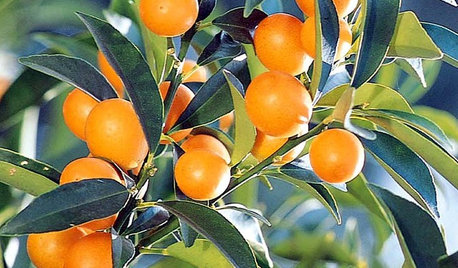
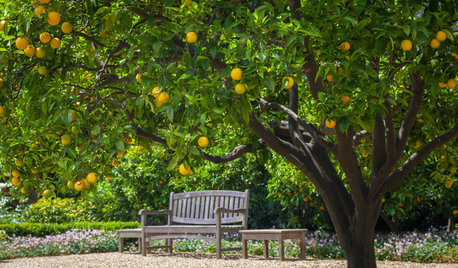

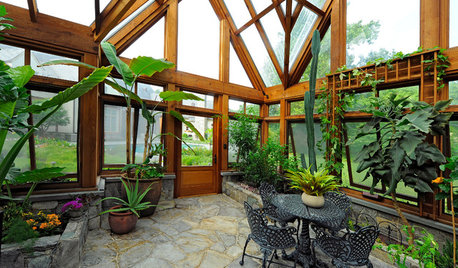
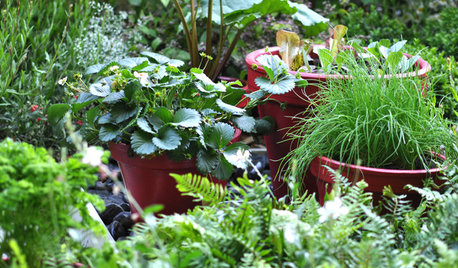
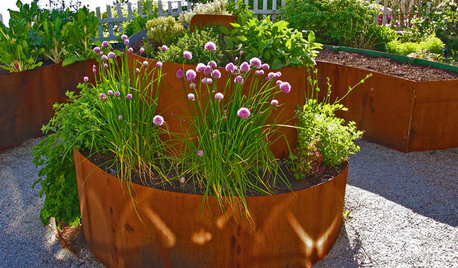
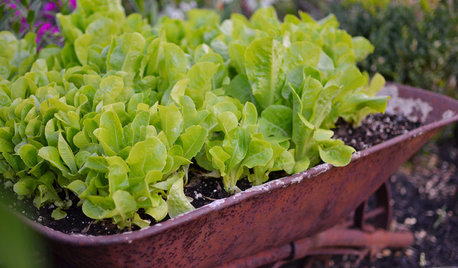
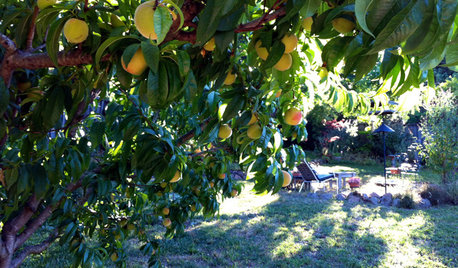
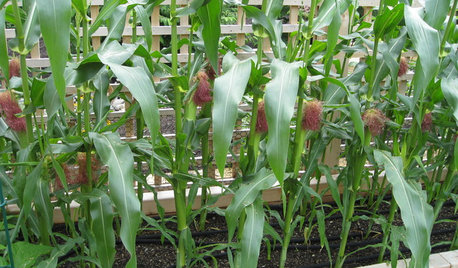
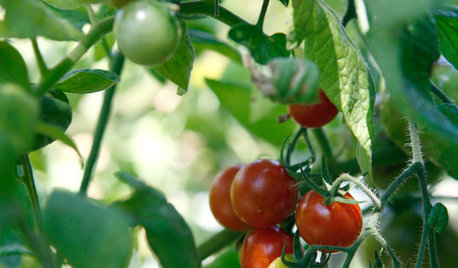



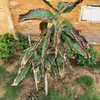
tj11240
Eggo
Related Discussions
tropical fruit trees in container pics
Q
Tropical Fruit Trees For Containers
Q
You know you are a tropical fruit growing addict when....
Q
I don't live in a tropical zone. Can I still grow citrus fruit?
Q
pepperseed
gardenathome
mango_kush
gardenathome
hmhausman
gardenathome
hmhausman
gardenathome
tj11240
norm52